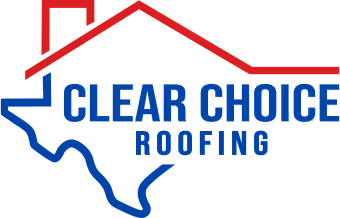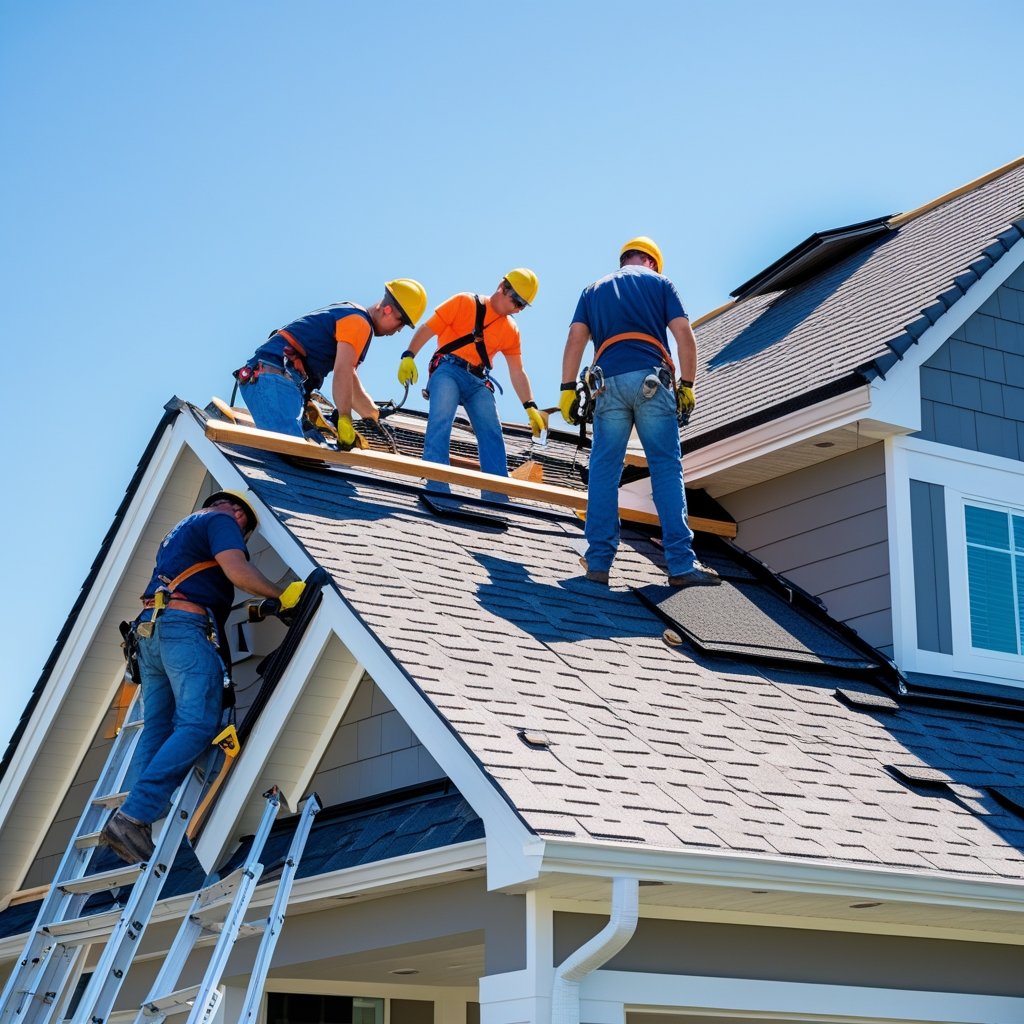Replacing your roof is a major project that can hit your wallet pretty hard. Luckily, there are several financing options to help you manage the cost without too much stress. You could look at personal loans, home equity lines of credit (HELOC), or even payment plans through roofing companies like Clear Choice Roofing.
It really helps to know your options. At Clear Choice Roofing, we’ll sit down with you and walk through different ways to finance your project, so you don’t have to panic about paying everything upfront.
Understanding Roof Replacement Financing
Roof replacement isn’t cheap, and most homeowners don’t want to drain their savings just to keep the rain out. Financing lets you spread out payments, and if you meet important approval criteria, you might even get decent terms.
Why Homeowners Finance Roof Replacements
Let’s face it—the upfront cost of a new roof can be pretty intimidating. Financing lets you get the work done now, which is crucial if you’ve got leaks or damage. Waiting until you’ve saved enough just isn’t always possible.
It’s also handy if you want to upgrade to better materials, like metal or tile, that might cost more but last longer. Some local and government-backed programs even offer loans or credits for energy-efficient roofs or storm repairs.
Key Benefits of Financing a New Roof
Financing helps you avoid emptying your savings or dipping into emergency funds. You can pay in smaller chunks over time, which keeps things manageable.
You also get the chance to choose good materials, not just the cheapest. Clear Choice Roofing can walk you through the options and help you pick a plan that actually works for your situation.
Some plans come with low or zero interest for a while, so you might pay back just what you borrow if you’re quick. And if you replace your roof when it’s needed, you can boost your home’s value and maybe even lower your insurance risk.
Factors Affecting Financing Approval
Getting approved for roof financing depends on a few things. Lenders check your credit score, income, and debt-to-income ratio. Better credit? Better rates.
How much you want to borrow and for how long also matters. Shorter terms mean higher payments but less interest overall. And for some programs, you’ll need to show the work improves energy efficiency or repairs storm damage.
Clear Choice Roofing can help you with the paperwork and submitting documents, so the approval process doesn’t drag on forever. Having your info ready can really speed things up.
Types of Roof Replacement Financing Options
You’ve got a few ways to spread out the cost of a new roof. Some let you borrow with set monthly payments; others tap into your home’s value. Roofing companies sometimes offer their own financing plans too.
Personal Loans for Roof Replacement
Personal loans let you borrow a lump sum and pay it back monthly—no need to use your house as collateral. The application is usually quick, and you get the money fast.
Your interest rate depends on your credit and income. If you qualify, you’ll have a fixed monthly payment, so budgeting is easier. It’s a straightforward option if you don’t want to risk your home.
These loans usually run from one to seven years. Check for any extra fees before you sign on.
Home Equity Loans and HELOCs
Home equity loans and HELOCs use your home’s value as collateral. A home equity loan gives you a lump sum with fixed payments, while a HELOC is more like a credit card—you borrow as needed.
Rates are usually lower than personal loans since your house backs the loan. You’ll need enough equity, and lenders will check your credit and income.
This can save you money on interest, but if you miss payments, your home’s on the line. Only go this route if you’re confident about the payments.
Roofing Company Financing Programs
Some companies, like Clear Choice Roofing, offer financing just for roof replacements. These might come with low or even zero interest for a set time, making payments easier to handle.
You’ll usually apply through the roofer or their lender partner. Approval depends on your credit and income. The process is often smoother since the company and lender are already working together.
Ask your contractor what plans they have. With Clear Choice Roofing, you’ll get help picking a plan that fits.
Government and Local Financial Assistance
Paying for a roof replacement can get easier with government or local help. You might find loans, grants, or special financing that make the project more affordable.
FHA Title I Loans
FHA Title I loans can help you pay for roof repairs or replacements, especially if you can’t get a regular loan. The federal government insures these, so approval is often easier. You can borrow up to $25,000 for a single-family home.
These loans cover repairs that improve safety or fix damage. Terms usually go up to 20 years with fixed rates. You’ll apply through approved lenders, and the down payment and credit requirements are usually more flexible.
PACE Financing
PACE (Property Assessed Clean Energy) financing lets you pay for energy-efficient upgrades, including some roof replacements, through your property tax bill over 10 to 20 years.
PACE isn’t available everywhere, but it’s worth checking if you qualify. Since payments come through your tax bill, it can be easier to manage. Plus, you get the added bonus of better energy efficiency.
State and Local Grant Programs
Some states and cities have grants or tax credits for roof replacements, especially for storm damage or energy upgrades. Grants don’t need to be paid back, so they can really cut your costs.
Check with your local housing or energy office to find out what’s available. Each program has its own rules, so eligibility varies. Clear Choice Roofing can help you look into these and guide you through applying.
Using Credit Cards for Roofing Projects
Paying for a roof with a credit card is quick, but it’s not without risks. It’s important to weigh the pros and cons and be smart about managing payments to avoid big fees or hurting your credit.
Pros and Cons of Credit Card Financing
Credit cards are fast and can give you rewards—cash back, points, all that. Some even offer 0% interest for a while, which can help if you pay the balance off fast.
But most cards have high interest if you don’t pay on time. A big charge can also bump up your credit utilization and ding your score.
Pros:
- Quick and easy
- Rewards or perks
- Some offer 0% interest promos
Cons:
- High interest after the promo ends
- Fees if you’re not careful
- High balances can hurt your credit
Best Practices When Using Credit Cards
Try to keep your balance low, and only use a card if you can pay it off quickly or before interest kicks in.
Check with your roofer about extra fees for card payments. Some, like Clear Choice Roofing, can help you find other financing if cards aren’t the best fit.
Set up reminders for payments, and look for cards with home improvement promos if you can.
Tips:
- Use cards with 0% or low intro rates
- Pay off the balance ASAP
- Don’t carry a high balance
- Double-check for contractor fees
Being careful with credit cards can help you cover your roof without piling on extra stress.
Zero-Interest and Deferred Payment Offers
These deals let you replace your roof without paying interest right away, but there are strings attached. You really want to know the rules before you jump in.
Eligibility Requirements for Special Offers
You’ll usually need solid credit for zero-interest or deferred payment plans. Lenders want to see a good payment history and low debt.
You might have to apply through Clear Choice Roofing or their lending partners. And you often need to make every payment on time.
Miss a payment or fail to pay off the balance in time, and you could lose the special offer—sometimes interest gets charged retroactively.
Always read the fine print. It’s not fun, but it could save you from an expensive surprise.
Risks of Deferred Interest
Deferred interest sounds good—no interest for a while—but if you don’t pay the full amount by the deadline, you could get hit with all the interest from the purchase date.
This can get expensive, fast. Missing the payoff deadline can turn a zero-interest deal into a pricey mistake.
Set reminders and keep track of your payments so you don’t get caught off guard.
How to Qualify for Roof Replacement Financing
Getting approved for roof financing means meeting some financial requirements. Lenders look at your credit score, income, and debt. Understanding these can help you get ready and boost your odds.
Credit Score Considerations
Your credit score is huge when applying for roof financing. Usually, a score of 650 or more helps you get approved and snag a better rate.
If your score’s lower, you might still get financing, but expect higher rates or stricter rules. Paying off debts and holding off on new credit before applying can help your score.
Lenders might also check how long you’ve had credit and how you’ve handled it. If you’ve got a steady history with on-time payments, that’s a plus. Clear Choice Roofing can help you figure out how your score affects your options.
Income and Debt-to-Income Ratios
Lenders want to know you can actually pay them back. They’ll check your income and how much debt you already have—your debt-to-income (DTI) ratio.
A DTI under 43% is usually preferred. That means your total monthly debts, including the new roofing payment, shouldn’t eat up more than 43% of your income. If your DTI’s too high, approval gets tricky.
You can boost your chances by increasing income or paying down debts before applying. You’ll need pay stubs or tax returns to prove your income, so have those handy.
Steps to Apply for Roof Replacement Financing
Applying for roof financing isn’t rocket science, but you’ll want to get organized. Gather your paperwork, shop around for good terms, and make sure you understand everything before you sign.
Gathering Necessary Documentation
Before you apply, pull together what lenders need: pay stubs or tax returns for income, your credit info, and details about your house. You’ll probably need a written estimate or contract from your roofer to show the loan amount.
Having your paperwork ready can speed things up a lot. If you’re working with Clear Choice Roofing, ask them for a detailed roof replacement estimate to include with your application.
Comparing Lender Offers
Let’s be real—not all financing options are created equal. It’s worth your time to compare interest rates, loan terms, and fees from a few different lenders. Personal loans, home equity loans, and even roofing-specific financing programs are all on the table. Some of these let you break up the cost into monthly payments, which is a relief if you’re not keen on dropping a big lump sum upfront.
Here’s a simple table to help you line things up:
Lender TypeInterest RateLoan TermFeesMonthly Payment Estimate Personal Loan8%5 yearsApplication fee$150Home Equity Loan5%10 yearsNo fees$120Roofing Financing6%7 yearsProcessing fee$130
Pick the offer that feels like the best balance for you—lowest cost, but also payments you can live with.
Understanding Loan Agreements
Once you’ve got a lender in mind, slow down and really read that loan agreement. Check the interest rate, repayment schedule, and any penalties for late payments or paying off early. Some contracts sneak in extra fees, so keep your eyes peeled.
Try to get a clear sense of the total cost across the whole loan. If something doesn’t make sense, ask. It’s your money on the line, so don’t be shy about getting answers before you sign.
Tips for Choosing the Right Financing Option
When you’re sorting out how to pay for your new roof, start with the cost of the loan and how it fits your monthly budget. What will you pay each month? What’s the total by the end? If you’re clear on those, you’re less likely to get blindsided later.
Evaluating Interest Rates and Terms
Interest rates hit your wallet every month and over the life of the loan. Hunt for the lowest rate you can get, but also check—does it stay the same? Fixed rates mean predictable payments. Variable rates can jump, and suddenly your monthly bill is higher.
Loan terms matter, too. Longer terms shrink your monthly payment but rack up more interest in the end. Shorter terms sting a bit more each month but save cash overall. You know your budget best, so don’t stretch yourself too thin.
And fees—ask about them upfront. Origination fees, prepayment penalties, weird little charges…they add up. Clear Choice Roofing always says to get the full list before you commit.
Assessing Total Loan Costs
The real cost of your loan isn’t just the monthly payment. Add up interest, fees, and the amount you borrow. That’s the number that counts.
It helps to use a loan calculator or ask for an amortization schedule. That way, you can see how much goes to interest versus principal, month by month.
Don’t forget your credit score. Higher scores usually mean better rates and terms. And hey, check out what people say about the lender—customer service can make or break your experience.
Avoiding Common Financing Mistakes
Financing a roof replacement can get tricky if you’re not careful. Watch out for borrowing more than you need and getting hit with surprise fees. These things can mess up your budget and turn a big project into a headache.
Overborrowing Risks
It’s tempting to take out a bigger loan “just in case,” but that means you’ll pay more in interest and fees. Figure out what your roof will really cost—get quotes from companies you trust, like Clear Choice Roofing. Add a little buffer for surprises, but don’t go wild. A huge loan can make monthly payments tough to handle.
Stick to what you actually need. Paying off extra money you didn’t use just wastes cash, and if you fall behind, your credit score takes a hit.
Missing Hidden Fees
Some lenders tuck in hidden fees like origination charges, penalties for paying off early, or late fees. They’re easy to miss until they show up on your bill.
Ask your lender to spell out every fee before you sign. Go through the loan terms carefully and flag anything that’s unclear.
Here’s a quick cheat sheet:
Fee TypeWhat to Look For Origination FeeOne-time charge for processing loanPrepayment PenaltyFee if you pay off loan earlyLate Payment FeesCharges if payment is missed or late
If you keep an eye out for these, you’re less likely to get surprised down the road.
Conclusion
If you’re planning a roof replacement, knowing your financing options can take a lot of the stress out of it. You’ve got choices—personal loans, home equity loans, or special roofing programs. These let you pay over time instead of all at once, which is pretty nice.
Clear Choice Roofing will walk you through your options and give you clear estimates. With quality materials and experienced crews, you can feel good about your investment.
Here’s a quick look at your main financing choices:
Financing TypeKey BenefitConsideration Personal loansFast approval, flexible termsHigher rates, usually unsecuredHome equity loansLower rates, possible tax perksUses your home as collateralRoof-specific loansTailored for roofing projectsMay need decent credit to qualify
The “right” plan depends on your budget and credit. If you’re unsure, Clear Choice Roofing is always up for a chat to walk you through it.
A new roof protects your home for years. Taking time to figure out financing now makes it way easier to get what you need—without the stress.
Frequently Asked Questions
Paying for a roof replacement? You’ve got options, from loans to payment plans. Knowing what’s out there helps you avoid surprises and pick the best fit.
What are some common ways to finance a new roof?
You can use personal loans, credit cards, or home equity loans. Some people go with contractor payment plans or try insurance claims if their policy covers the damage.
Can I get a roof replacement loan with bad credit?
It’s tougher, but not impossible. Some lenders work with folks who have lower credit scores, though you’ll probably pay a higher interest rate.
Are there any government grants available for roofing projects?
Government grants for roofs are pretty rare and usually only pop up in special cases, like disaster relief or energy efficiency programs. Check with your local housing agency—sometimes you get lucky.
How do home equity loans work for financing roof replacements?
With a home equity loan, you borrow against your home’s value. You get a lump sum, pay a fixed interest rate, and make payments over time.
Is it possible to finance a roof replacement through my roofing contractor?
Yep, some contractors—including Clear Choice Roofing—offer financing plans. They’ll help you split up payments over several months or years.
What should I look for in a good roof financing plan?
Start with the basics: low interest rates matter a lot, and you’ll want payment terms that don’t box you in. Hidden fees? Big red flag—definitely ask about those upfront. It’s also worth checking if the company actually helps you through the process or just leaves you hanging. Clear, honest communication goes a long way, too.



